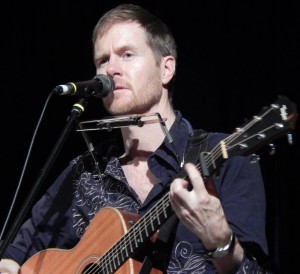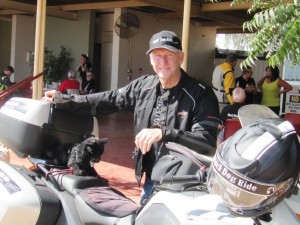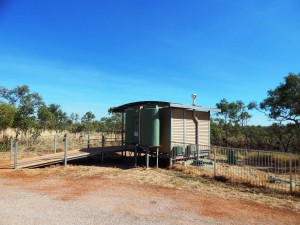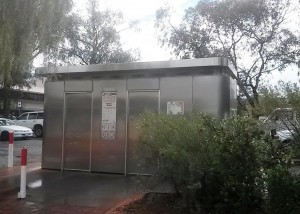
When songwriter Fred Smith brought his show Dust of Uruzgan to Maleny in November 2013, he called me and asked if the band could rehearse in our downstairs room. It seemed the venue was not available until 4pm and he needed to rehearse with his locally recruited band. So Fred and five other people arrived at our place (bringing the makings of lunch with them), which explains this happy snap (left).
Self-funded songwriters have to do these sorts of things all the time in Australia, when they can’t afford to fly people in for two gigs. I remember that concert because Fred managed to pull more than 100 people to a small town gig on a Wednesday night. They were a listening audience too, and that’s a good thing for songwriters who tell long, involved stories. Fred (I wrote about his WA tour last week), has been pursuing his passion for songwriting for 17 years and like many of us, he is finding it harder to draw an audience in a sports-obsessed country.
I have a lot of admiration for songwriters like Fred, John Thompson and Nicole Murray (Cloudstreet) and Roz Pappalardo and Chanel Lucas (Women in Docs). They have worked hard, toured hard and persevered. I decided this week to ask some of the songwriters I know who have been doing this for a long while just what it is that keeps them going.
John Thompson and Nicole Murray chose to make music their career in 2002, after working seriously at music around day jobs for two years. Since then, they have toured seven times to the UK, and have also been to USA, Denmark, Germany, Japan, New Zealand and Morocco.
“There are still plenty of places in Australia we haven’t seen,” says Nicole. “Most of our touring in Australia has been east coast, from Townsville to Tassie, with a couple of trips to Adelaide and southern WA, once as the entertainment on the (Indian Pacific) train.”
Cloudstreet sing both traditional and original songs which fit into the Australian and Anglo-Celtic traditions, using close harmony vocals and a range of instruments. After years of touring and turning out seven Cloudstreet CDs, the duo took a year off when John was cast as The Songman in the travelling stage show, War Horse. While John was away on tour, Nicole made two recordings with violinist and singer Emma Nixon as The Wish List. Now John and Nicole are planning to record again in early 2015 to take a new CD to the UK in May.
Is there is a living doing what you do?
“There is usually money to be made when touring, but the cost of the travel, food and accommodation eats a lot of it up,” says Nicole.
“We can afford our rent when touring but it’s not so easy when we come off tour. Because of this we have diversified and are concentrating on musical activities that can be sustained locally a bit more, like choirs and dance bands.”
Ah, but will you still be doing it when you’re 74?
“I think we will find a way to keep making music, because the emotional sustenance it provides is essential.”
Queensland acoustic duo Women in Docs (Roz Pappalardo and Chanel Lucas) have toured all over Australia and beyond since forming in 1998.
“We formed after years of playing in rock bands across Far North Queensland and deciding that singing our own songs, telling our own stories and using our own set list was more important than almost anything else,” Roz says on the phone from Cairns.
“It’s hard to know how many k’s we’ve driven. I wish we did know. I think we’ve probably driven from Cairns to Adelaide maybe 25 times? We’ve never driven to Perth but flown there many times and we’ve done Darwin as Women in Docs once. We’ve crisscrossed both America and Canada in a car. Goodness!
Roz and Chanel regret not listening to their intuition more – “it’s always right, you know…”
“We always ‘knew’ that we shouldn’t have done something. But, even in those situations, we always get a cracking story and a potentially a song.”
Meanwhile the Docs are quietly beavering away, writing new songs and getting ready to tour in late October, the Tamworth Country Music Festival in January and then a few festivals in 2015.
“And hopefully a new record. Why not? We love it.”
Solo singer-songwriter and multi-instrumentalist Chris Aronsten has been persevering with music for 35-40 years.
“I just love it,” he says. Chris sings original songs, traditional folk and blues, and plays Celtic and bluegrass fiddle tunes.
“I started playing and singing as a kid in Brisbane in the 1960’s and moved to Adelaide in ’74, playing gigs at folk clubs, coffee shops and pubs. I went to Melbourne on and off for gigs and started writing songs back then too.
“I’ve been scratching out a living ever since, except for a brief time in the early ’90s when I had a second-hand guitar shop with a muso mate and did gigs on the weekend. After five years of that I just went back to playing full time. Couldn’t do both.”
Chris has produced two CD’s in recent years, one of which was praised by the Sydney Morning Herald’s Bruce Elder, and is working on songs for a new one.
“These days I’ve got enough of an established circuit here and in the UK that the next few months are usually (financially) secure.
“I guess I could be more ambitious, but I’m more excited about playing music than ever.
“I can’t imagine not still doing gigs when I’m 74 if I stay fit and healthy.”
Brisbane songwriter Mark Cryle’s best-known band was Spot the Dog, which produced three CDs of Mark’s songs and though the members have gone on to other projects, they remain good friends and often join Mark on stage.
“I have always tried to surround myself with good musicians – players who can find what is right for the song. I still think that the parts of my recordings that I like best are the parts I didn’t think up myself.
“I enjoy writing for different projects and am currently planning in my head two recordings – one of chamber folky sort of stuff with the Civil Union (Rebecca Wright, Donald McKay and Alice McDowell), and another CD more in the vein of Sideshow Alley.”
The latter, with its sweet nostalgic song about first love at the Brisbane Ekka, has received radio play. Another track, Kalgoorlie Girl, was nominated in Macca’s Top 10 for 2013 and Waiting for the Ice to Thaw has been included on Macca’s just-released compilation “Well I Love It”.
Mark says his next album will have a mixture of “relationship” songs and some narratives about the nation’s past.
“But I have a thesis to finish writing first, though.” (The origins of Anzac Day).
Granite Belt-based Penny Davies and Roger Ilott perform their own songs, as well as those of other, mainly Australian, writers. They have had their own studio and record label since 1982 and released about 20 albums.
They had a long association with the late poet and folklorist Bill Scott and as a result many of their songs have become well-known on ABC radio.
“Both of us have always seriously pursued a music career – about 40 years all up (each),” says Penny.
“We both started in the folk music scene in Sydney in the early 1970’s
“We’ve performed in about 100 towns throughout Queensland including Cooktown and Weipa and out west to Boulia and a fair bit of NSW.”
And is there a living in it for you?
“We’ve always got by financially by learning to live on a little. We used to make money touring when the Arts Council used to fund it. These days it’s difficult to make money if you have to travel to gigs.”
No regrets, though?
“I hope we will be making music till our last breath – so long as we can sing and play, we’ll sing and play,” says Penny.
Independent acoustic music artist Steve Tyson is another whose work has caught the attention of mainstream CD reviewers.
“I think it just helps reinforce the necessary social media marketing these days. There is so much stuff out there, so many people doing shows, that fairly constant (not crazy bombardment), social media messages help keep your upcoming show front of mind.
“I have always looked at touring as an adventure. I don’t want to lose money, and I at least want to pay my best mates who tour with me a few dollars to buy a few beers! Fortunately most tours have ended up in the black.”
Steve is about to go on the road with a new CD, “Green Side Up”. He says he tours to take his story songs to fresh audiences, and experience that “incredible feeling” when people are listening attentively to the lyrics.
“That’s the most important thing. Sure I hope that translates to sales and I want to cover costs, but that’s not why I do it!”
The challenge for narrative songwriters like Mark Cryle, Steve Tyson and Fred Smith and yours truly, is to find a listening audience. The pubs, clubs, restaurants and cafes that hire musicians are more often meeting places for people who want to catch up with their friends and have a conversation. Unhappily, this often happens at the tables in front of the stage.
We (The Goodwills) discovered house concerts were a good way of helping songwriters find a listening audience. We’ve promoted house concerts in Brisbane and Maleny over that last 20 years.
We usually do an opening set. There’s afternoon tea, carrot cake and I can go and have a lie-down before the guest act starts. We’ll be looking to do house concerts next year when we tour with my new CD, The Last Waterhole (shy retiring songwriter seeks listening audience: apply within).
Next week: Crossing the Nullarbor











